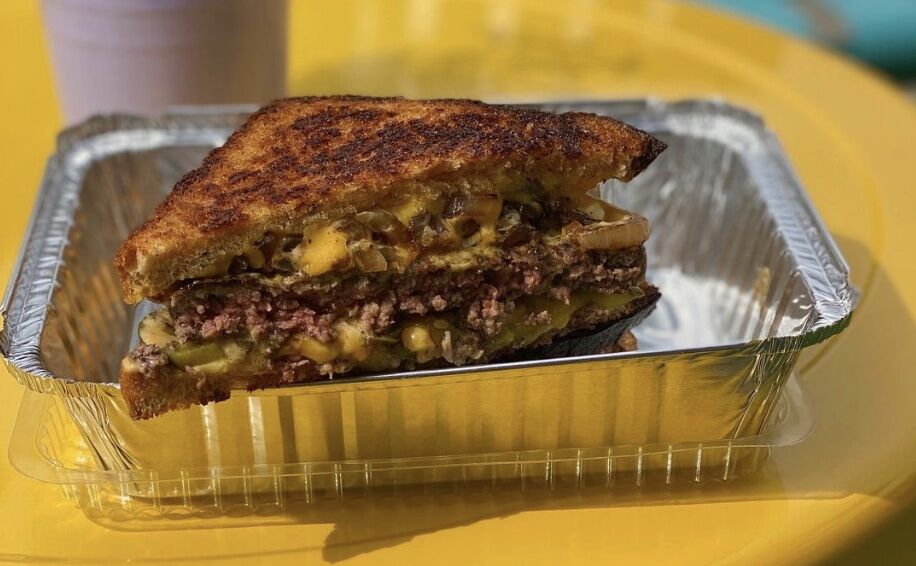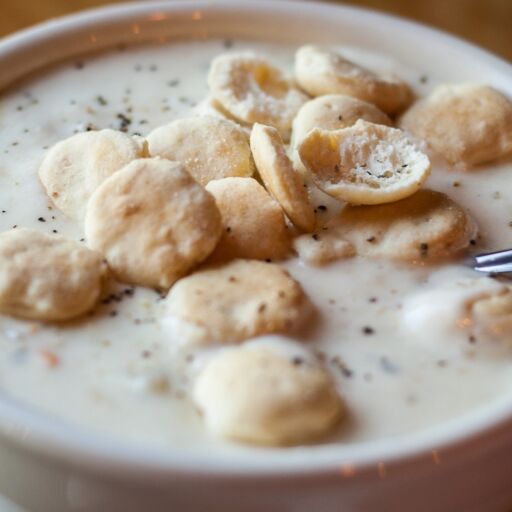The Founding Fathers could’ve named this country “The United Sandwiches of America.” Even though sandwiches weren’t invented here, Americans have certainly perfected them over the years and, in keeping with our melting pot spirit, created historic and deeply individualistic recipes that have stood the test of time.
People have been eating sandwiches in one form or another since the first century B.C., when Rabbi Hillel the Elder packed Paschal lamb and herbs between softened matzah bread. Eventually, 18th-century aristocrat John Montagu, a.k.a. the Fourth Earl of Sandwich, gave the meal the name we know and love today. He started devouring beef between toasted bread so he could eat without quitting his card game — a sentiment I think we Americans can get behind. As with so many outstanding gastronomic inventions from abroad, sandwiches eventually made their way to the States and onto plates, where they’ve become an iconic staple in the American diet. Below, we explore the history — and controversies –— of some of America’s favorite sandwiches and some of the great eateries where you can find them today.
Cheesesteak
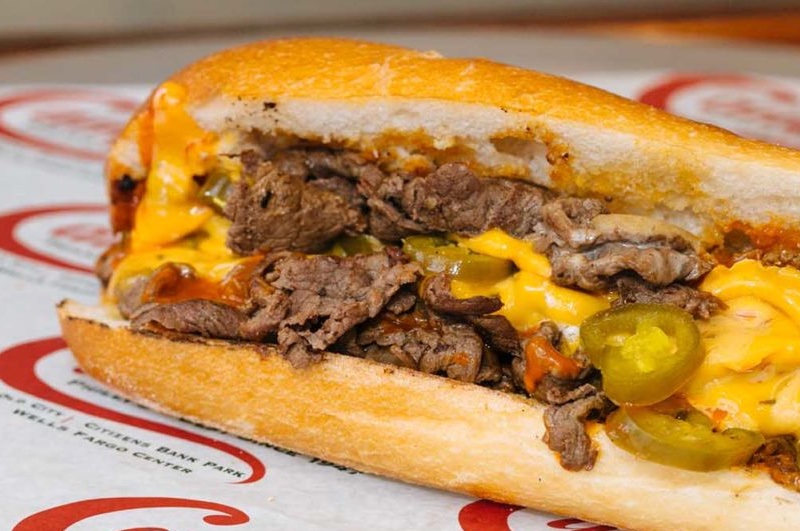
The story goes that the cheesesteak was invented in 1930 when South Philadelphia hot dog vendor Pat Olivieri decided to switch up his usual lunch and ate chopped meat cooked atop his hot dog grill on an Italian roll with onions. A customer and cab driver asked Pat to make him the same in lieu of his regular hot dog order, and as with many tasty foods, the warm steak sandwich caught on. Colloquially referred to as the “Philly,” there was no cheese on the sandwich until the 1940s, when a manager known as “Cocky Joe” first added melted provolone. Several toppings have been added to the cheesesteak as the sandwich has evolved, including mushrooms, sweet peppers and Cheez Whiz.
These days, Pat’s King of Steaks still operates in Philadelphia across the street from rival shop Geno’s Steaks, which has been slinging cheesesteaks since the 1960s. Ask Philadelphians where to find the best, and opinions will vary. Still, standout spots include Tony Luke’s, Dalessandro’s Steaks and Hoagies and Barclay Prime, the latter of which sells a $140 Wagyu ribeye with onions and truffled cheese, topped with foie gras and served with half a bottle of champagne.
Club Sandwich
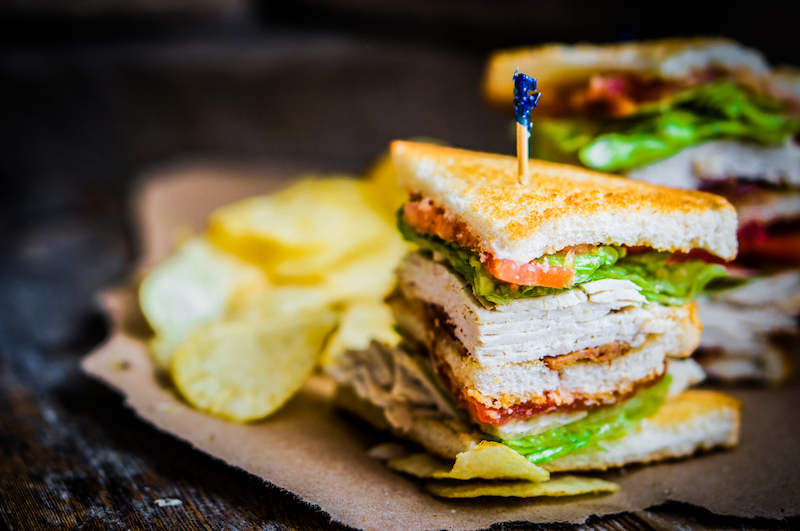
The club sandwich is distinguished by its third slice of bread in its middle, expertly wedged between two layers of turkey, ham, cheese, bacon, mayo, lettuce and tomato. That said, variations (and likely controversy) exist regarding what ingredients go where in the triple decker sandwich. There is also controversy surrounding the origins of the club sandwich. It comes down to a battle of two clubs.
The first is the Union Club of New York City. Early accounts of the club sandwich date back to the late 19th century, when an article published in an 1889 issue of “The Evening World” newspaper mentioned the Union Club sandwich, named after the Union Club of New York City, made with two slices of toasted Graham bread, poultry and ham. The second is the Saratoga Club. Some claim the club sandwich originated in the exclusive gambling house in downtown Saratoga Springs, N.Y., in 1894.
Regardless of where the toasted sandwich was born, it wasn’t long before it gained traction, and by 1904, the club sandwich was featured and served by four different restaurants at the World’s Fair in St. Louis, Mo., making it a bona fide hit. As a result, the club sandwich became a staple on diner menus across the country. Today, Sam LaGrassa’s in Boston offers a great version with roast beef.
Cuban
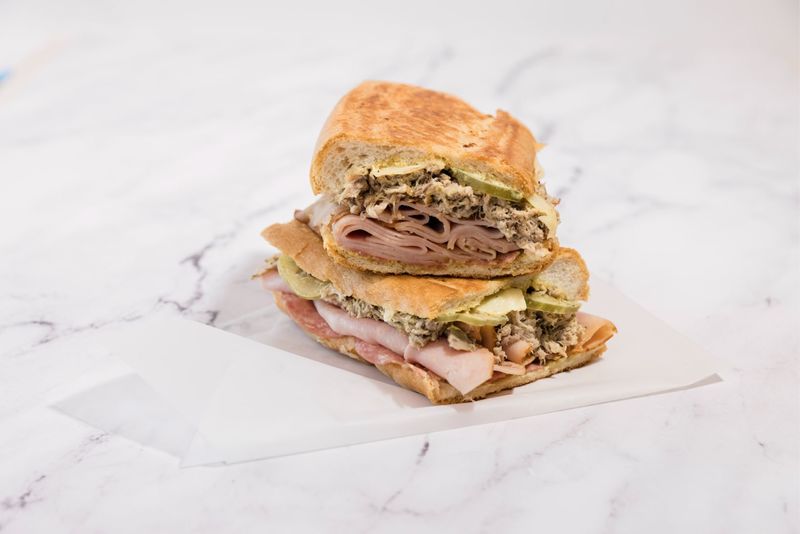
Though Tampa and Miami like to spar over which city invented the Cuban, the sandwich’s roots lie in Cuban culture; its origins date back over 500 years ago to the Taíno tribe in Cuba. They ate a sandwich on a cracker-thin, yucca-based bread with fish or poultry. Europeans came, added pork and ham to mix, and, over the centuries, the sandwich continued to grow and adapt. In the mid-19th century, the Cuban tobacco industry brought Cubans — and their sandwich traditions — to the Tampa neighborhood of Ybor City, an area rich with cigar factories and many workers of Cuban, Italian and Spanish descent looking for affordable, hearty lunches. It was the hunger of these workers that birthed the Cuban as we know it, a wondrous concoction layered with shaved ham, roasted Cuban pork, Swiss cheese and tangy mustard between two slices of Cuban bread. The bread here is crucial. Different from the yucca of centuries ago, it is traditionally made when a yeasty white dough is wrapped in a palmetto leaf, imparting full flavors and holding moisture in the loaves while baking.
Today, the historic La Segunda Bakery in Tampa makes most of the bread for Cubans served across America, a labor of love the bakery has been happily taking on since 1915. Tampa is so proud of its contribution to the Cuban that in 2012, the city council officially established the “Historic Cuban Sandwich” as Tampa’s signature sandwich. Yet, while Tampa may have added salami to the Cuban and perfected it at places like West Tampa Sandwich Shop and La Teresita, Miami put it on the map with institutions like Las Olas Café and Old’s Havana Cuban Bar & Cocina. Despite Tampa’s Cuban proclamation, in 2016, former Miami mayor Tomas Regalado declared the month of March as Cuban sandwich month, adding, “Just know, salami does not belong in a Cuban sandwich,” as a dig at Tampa’s decree. For now, it seems that the feud between the South Florida cities will continue, as will America’s admiration for the crisp and meaty Cuban.
French Dip
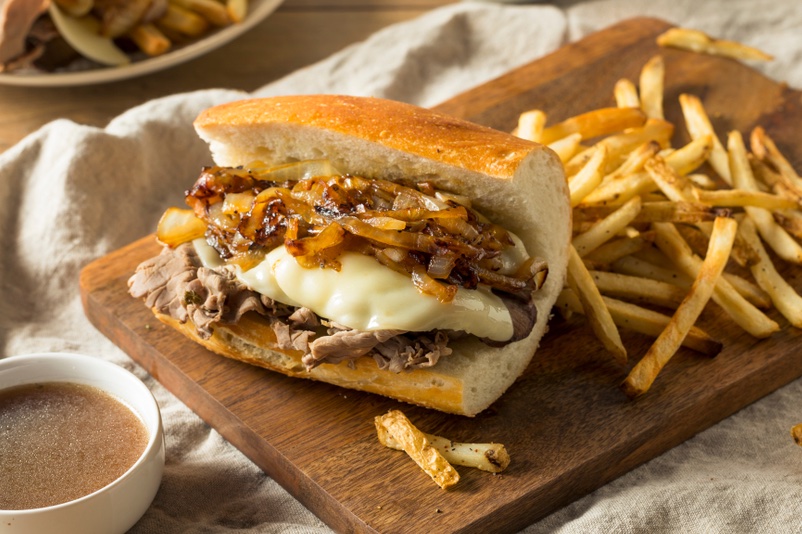
The French dip sandwich’s history is a hotly contested issue on the mean streets of Los Angeles. The earliest records point to Philippe Mathieu, a French sandwich-smith who owned the Los Angeles restaurant Philippe the Original back in 1918. Allegedly, Philippe was preparing a sandwich for a policeman and accidentally dropped the French roll into a pan of hot beef drippings before serving the sandwich. The policeman returned with friends hungry to try the dipped sandwich; thus, the Philippe French Dip was born. Philippe the Original’s dipped sandwiches are served wet and undressed alongside their signature hot mustard and can be ordered with roast beef, roast pork, lamb, turkey, ham or pastrami.
Yet just a little over a mile away, Cole’s Pacific Electric Buffet, now known as Cole’s French Dip, asserts that it created the sandwich 10 years earlier, in 1908. The story goes that chef Jack Garlinghouse invented the French dip for a patron who wanted a roast beef sandwich, but could not handle the crisp bread due to sensitive gums. Unlike the sandwich at Phillippe’s, Cole’s serves their French dip with a steaming cup of au jus (the liquid drippings that cook out of beef that translates to “with juice” in French) on the side so that eaters can dip the sandwich to their heart’s content, and also features a signature in-house spicy mustard.
Since the turn of the century, the French dip has expanded beyond the city limits of Los Angeles. Today, you can order the sandwich at restaurants across the country, often with griddled onions and Swiss, American, Monterey Jack or bleu cheese. Luckily, both Philippe the Original and Cole’s French Dip are around today, the former serving French dips in a cafeteria-style setting while the latter is located in a saloon-style bar once frequented by Charles Bukowski. Next time you’re in Los Angeles, grab a friend and split a sandwich at each of the iconic institutions.
Hot Brown
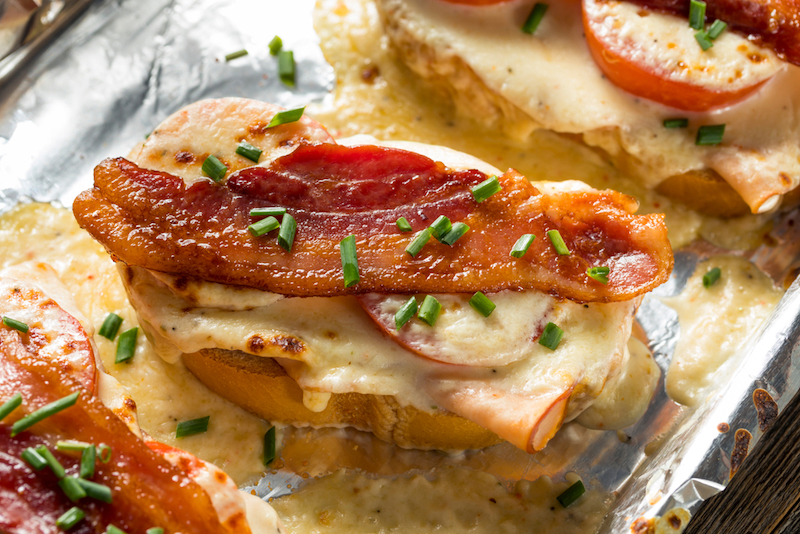
Often referred to as the “Louisville Hot Brown” or “Kentucky Hot Brown,” the Hot Brown sandwich was invented in 1926 by chef Fred K. Schmidt at The Brown Hotel in Louisville. According to local Louisville lore, The Brown Hotel was the place to be in the Roaring ’20s, and over 1,200 guests would gather for a night of dinner and dancing at the downtown spot each evening. After working up an appetite on the dance floor, the guests would indulge in late-night ham and egg dinners, but quickly grew tired of the meal and wanted to try something new. Chef Schmidt stepped in and whipped up the open-faced Hot Brown sandwich built atop Texas toast with hot turkey breast and tomato slices covered in a béchamel-based Mornay sauce and strips of bacon.
To this day, the Hot Brown is built the way Schmidt intended — broiled to melty perfection until the toast is crisp and typically finished with Pecorino Romano, parsley and paprika. A former executive chef at The Brown Hotel once claimed that the sandwich was previously made with peaches instead of tomatoes, as they were a luxurious addition at the time. Today, The Brown Hotel is still famous for the Hot Brown and attracts tourists and gourmets from across the globe, selling over 800 sandwiches per week and even more during the Derby season. If you are in Louisville and have already tried The Brown Hotel’s version, head to The Village Anchor for “The Hotter Brown,” made with pulled roasted chicken instead of turkey.
Lobster Roll

The history of the lobster roll is as murky as the waters of the Atlantic, but most food experts say the sandwich first debuted at Perry’s in Milford, Conn., between 1929 and 1934. While many assume that Maine is the original home of the lobster roll, the story goes that a traveling liquor salesman made a pit stop at Perry’s and requested a lobster sandwich, which the kitchen concocted using grilled white bread, lobster and butter. As with every sandwich on this list, the grilled lobster sandwich caught on. Eventually, proprietor Harry Perry reached out to the now-shuttered French’s Bakery for help developing a special submarine bun for the sandwich with a wedge cut from the top, perfect for catching warm chunks of lob and hot drawn butter before being griddled. The rest, as they say, is a buttery history.
Lobster rolls were sold at roadside stands and shacks all over the Eastern seaboard by the 1950s. With the help of legendary eateries like Red’s Eats in Wiscasset, Maine, the sandwich’s popularity skyrocketed. Perry’s may be closed, but the lobster roll maintains a heavy influence across New England today and in places like Eastern Long Island and the Cape Cod peninsula. The sandwich is typically served “Connecticut style,” hot with drawn butter, or “Maine style,” cold and mixed with mayonnaise, lemon juice, herbs and occasionally celery. In the mid-’90s, the lobster roll experienced a nationwide surge thanks to Rebecca Charles, chef and owner of Manhattan’s Pearl Oyster Bar. She started serving a massive lemony, mayo-based lobster roll stuffed with giant pieces of knuckle, claw and lobster tail alongside shoestring fries. Fun fact: McDonald’s locations in New England previously served a McLobster sandwich seasonally, though it has been a few years since it graced McMenus.
Muffuletta
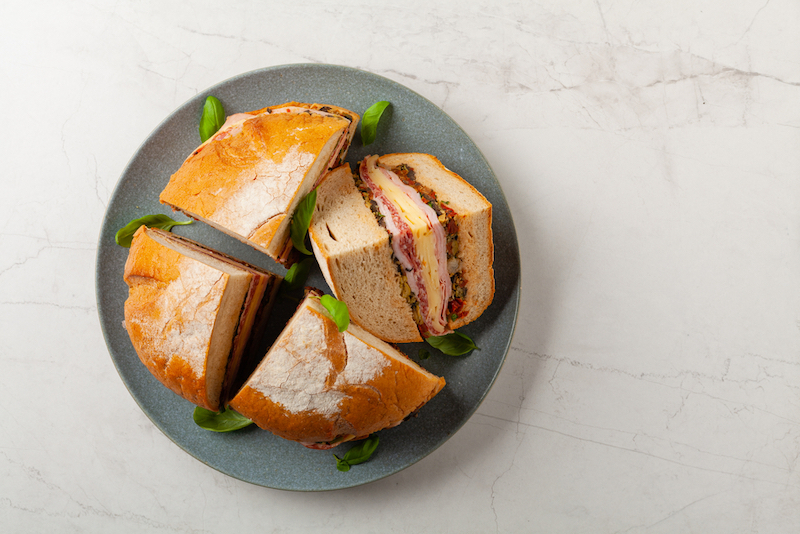
The muffuletta sandwich may have gotten its name from a round and seeded Sicilian bread loaf, but you won’t find it anywhere on the streets of Italy. The zesty and massive sandwich came to be in the New Orleans neighborhood of Little Palermo among Italian immigrants, many of whom settled in the city during the late 19th century after fleeing poverty in Sicily. The area became well-known for Italian bakeries, pasta factories, grocers and social clubs. Here, in 1906, Salvatore Lupo, owner of Central Grocery Co., a Sicilian delicatessen, invented the muffuletta. Lupo made the sandwiches for workers who visited his shop at lunch to purchase cheeses, cold cuts, olive salad and loaves of muffuletta bread.
By the 1970s, the muffuletta was well established in New Orleans and beyond. While Little Palermo no longer formally exists, Central Grocery & Deli still does. It sells the sandwich and boasts that they are the home of the original muffuletta. Tourists still travel to the Big Easy to try the best versions with salami, ham, mortadella, provolone, Swiss cheese and olive salad atop a massive, round, honey-crusted sesame loaf — seriously; the loaf can be as big as a plate. As such, eateries like Giorlando’s Restaurant and the historic Napoleon House will often serve the sandwich by the quarter, the half or, if you’re especially ravenous, the whole.
New England-Style Italian
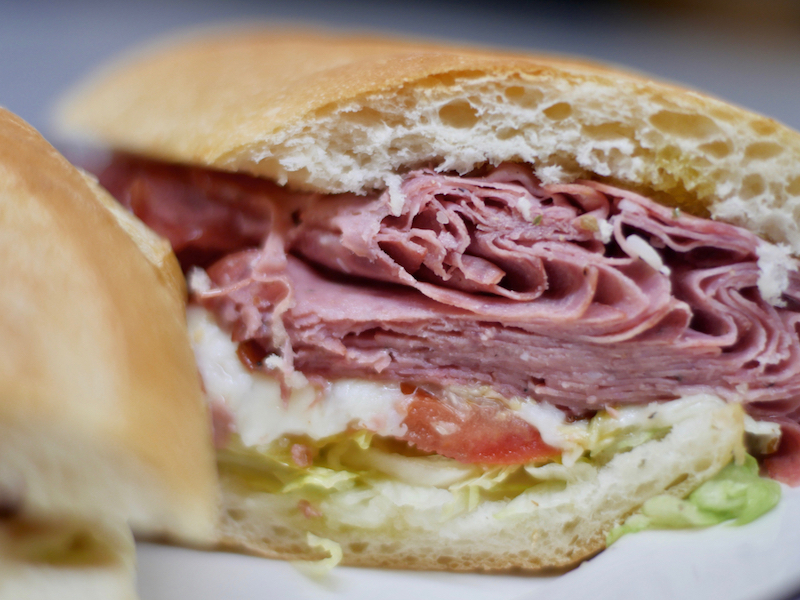
The New England-style Italian sandwich is a downright delectable classic that comes to us from Maine. A blue-collar sandwich, the Italian was designed by baker Giovanni Amato in 1902 to cater to hungry dockworkers in Portland who requested that he add cold cuts, cheese and vegetables to his freshly baked bread. Soon after, he created Amato’s Original Real Italian, made with boiled ham, American cheese, raw white onions and green peppers, black olives, sour pickles and salt and pepper, finished with a signature oil blend on a soft, white roll. The combination of the ingredients made Amato’s original Italian an instant icon and made for a perfectly balanced sandwich of soft and crunchy textures and rich and tangy flavors.
The sandwich was so successful that by the 1920s, Amato had established a sandwich shop in the cradle of India Street in Portland. Today, the original Italian is still on the menu at several Amato’s locations around Maine, along with classic Italian sandwiches topped with Genoa salami, capicola, prosciutto, provolone and an array of vegetables. Other delicious variations of the sandwich can be found throughout Maine at bespoke restaurants and grocers like DiPietro’s Market in South Portland and Corsetti’s in Westbrook, while outside the state, All About The Bread in Los Angeles and Faicco’s Italian Specialties in New York City serve excellent versions.
Patty Melt
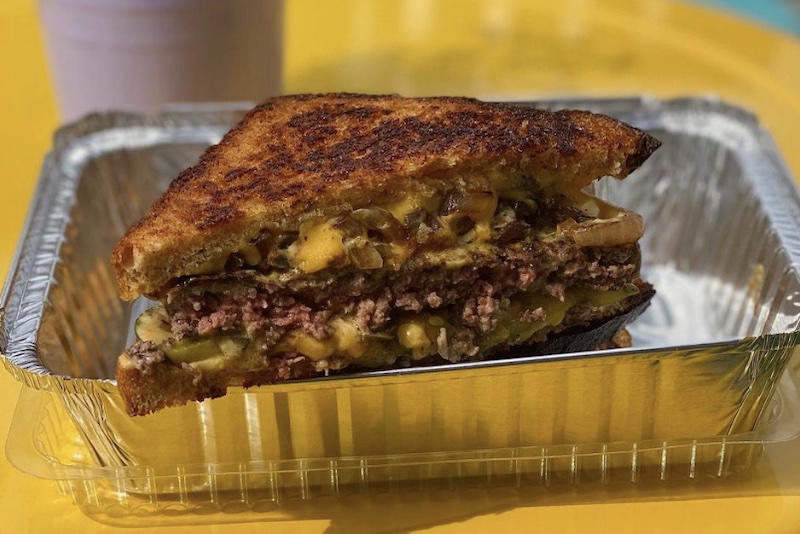
Is it a burger? Is it a sandwich? We’d like to call the patty melt both, though hamburger expert George Motz once declared the beefy wonder a sandwich due to its lack of a bun. Patty melts have become a diner staple in America, made with a ground beef patty, melted Swiss or Gruyère cheese and caramelized onions atop two slices of butter-griddled rye bread. Think: a grilled cheese meets a classic hamburger.
The dates surrounding the sandwich’s origin are cloudy, but many believe that the patty melt first appeared in 1950 on the menu of Tiny Naylor’s, a Los Angeles drive-in owned by restaurateur William “Tiny” Naylor. The sandwich became a family tradition of sorts. Jennifer Naylor, chef and granddaughter of Naylor, added the patty melt to the menu of Wolfgang Puck’s Granita. In 2004, Tiny Naylor’s son, Biff, purchased Du-par’s, a diner-style restaurant, and added his own “Tiny’s Patty Melt” to the menu. It remains a Du-par favorite to this day. One of the best versions, however, comes from outside the Naylor clan. If you find yourself in the Midwest, stop by Little Goat Diner in Chicago, helmed by James Beard Award-winning chef Stephanie Izard, and try her spin on the classic. She swaps out the Swiss for American cheese and adds pickles and special sauce.
Reuben
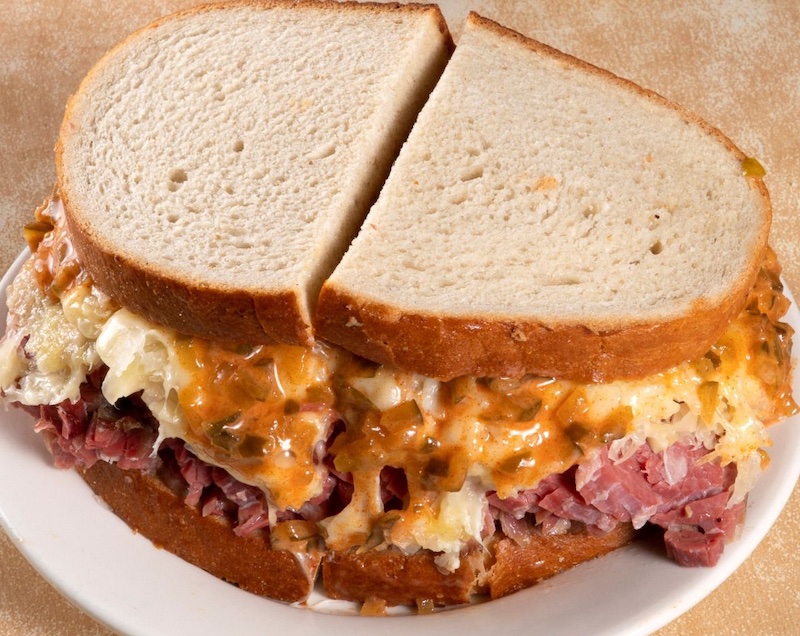
The Reuben is a marvelously grilled sandwich beloved by sandwich-eaters across America, but, like so many great American sandwiches, the subject of who invented it is broadly disputed. Though we know that the Reuben goes hand-in-hand with the delicatessen culture prevalent in New York City, many say that the sandwich originated in Omaha, Neb., back in 1925. Supposedly, Jewish-Lithuanian grocer Reuben Kulakofsky was playing his weekly poker game at the Blackstone Hotel in Omaha and fatefully requested a corned beef and sauerkraut sandwich. Bernard Schimmel, who worked in the hotel kitchen, made the sandwich, but added Swiss cheese and Thousand Island dressing to the order, then griddled everything between two slices of rye bread, thus inventing the Reuben. The Reuben was added to the Blackstone Hotel’s lunch menu, and gained popularity, even national notoriety, in 1956 when former Blackstone waitress Fern Snider entered a national sandwich idea contest with the hotel’s Reuben recipe and won. The city of Omaha is so pleased with the sandwich that it has officially named March 14th National Reuben Day.
Yet, as believable as that story sounds, another account holds that the Reuben was first created around 1914 by Arnold Reuben, a German-Jewish owner of the now-shuttered Reuben’s Delicatessen in New York City. According to delicatessen lore, the creation of the sandwich was essentially a happy accident when Reuben was trying to make a meal for Broadway actress Marjorie Rambeau. Even the details of this account are disputed. Some believe that while the sandwich originated at Reuben’s Delicatessen, it was first made by former chef Alfred Scheuing in the 1930s for Reuben’s son. Although we will probably never know who first created the Reuben, the sandwich is still as popular as ever. Reubens are on menus at delis and sandwich shops around the country, including Crescent Moon in Omaha, where you can get the Blackstone Reuben, and of course, the iconic Katz’s Delicatessen in New York City.


